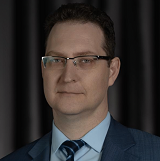A case of congenital hyperinsulinism in a child with hypoxic-ischemic CNS damage
https://doi.org/10.21886/2219-8075-2025-16-3-91-98
Abstract
This article presents a clinical case of a patient with congenital hyperinsulinism. The girl, born on in a state of moderate severity due to symptoms of respiratory failure, neurological symptoms, on the 1st day of her life was transferred to department of pathology of newborn and premature infants from the maternity hospital of the city clinical hospital. During the observation period, persistent hypoglycemia was noted in the department, which was corrected by intravenous infusion of 10% glucose, when attempting to cancel intravenous drip administration of 10% glucose, episodes of hypoglycemia (up to 1.8mmol/l) resume. Taking into account the increase in blood insulin levels to 67.2 mg/l, the patient was transferred to the Scientific Research Institute of Obstetrics and Pediatrics (NIIAP) for further examination and choice of treatment tactics. During hospitalization at the NIIAP, the diagnosis was established: Congenital hyperinsulinism — against the background of hypoglycemia, 1.2 mmol /l insulin level — 10 µmed /ml. From 01.07.2024, with the consent of the mother, according to vital indications, Diazoxide (Proclicum) therapy at a dose of 20 mg / day (5.0 mg / kg/ day) was started in the department under the control of glycemia, against the background of which there was a tendency to stabilize glycemic indices, fluctuations in the level of glycemia according to the glucose meter from 2.7 mmol / l to 5.0 mmol / l, from 08.07.24 the abolition of infusion therapy of 10% glucose. The therapy is tolerated satisfactorily; no significant side effects were found. However, given the persistent hypoglycemia of 2.7 mmol / l against the background of the fasting interval, the dose of Diazoxide was increased to 25 mg / day (5.5 mg / kg / day). The child continues to be in the hospital.
About the Authors
L. V. KravchenkoRussian Federation
Larisa V. Kravchenko, Dr. Sci. (Med.), leading researcher in the scientific department of the clinic NIIAP scientific management
Rostov-on-Don
Competing Interests:
Authors declares no conflict of interest
L. P. Mashkova
Russian Federation
Lyudmila P. Mashkova, endocrinologist of the endocrine department, Research Institute of Obstetrics and Pediatrics
Rostov-on-Don
Competing Interests:
Authors declares no conflict of interest
M. S. Kasyan
Russian Federation
Maria S. Kasyan, Cand. Sci. (Med.), assistant at the Department of Childhood Diseases No. 2
Rostov-on-Don
Competing Interests:
Authors declares no conflict of interest
O. Z. Puzikova
Russian Federation
Olesya Z. Puzikova, Dr. Sci. (Med.), Leading Researcher of Pediatric Departmen of the Pediatric Research Institute of Obstetrics and Pediatrics
Rostov-on-Don
Competing Interests:
Authors declares no conflict of interest
A. P. Gerasimenko
Russian Federation
Arina P. Gerasimenko, 6th year student
Rostov-on-Don
Competing Interests:
Authors declares no conflict of interest
M. A. Levkovich
Russian Federation
Marina A. Levkovich, Dr. Sci. (Med.), Associate Professor, leading researcher in the scientific department of the clinic NIIAP scientific management
Rostov-on-Don
Competing Interests:
Authors declares no conflict of interest
V. A. Shovkun
Russian Federation
Valeria A. Shovkun, Cand. Sci. (Med.), Associate Professor, Head of the Department of Propaedeutics of Childhood Diseases
Rostov-on-Don
Competing Interests:
Authors declares no conflict of interest
I. I. Krukier
Russian Federation
Irina I. Krukier, Dr. Sci. (Bio.), researcher in the scientific department of the clinic NIIAP scientific management
Rostov-on-Don
Competing Interests:
Authors declares no conflict of interest
I. V. Panova
Russian Federation
Irina V. Panova, Dr. Sci. (Med.), Associate Professor, Professor of the Department of Pediatrics and Neonatology
Rostov-on-Don
Competing Interests:
Authors declares no conflict of interest
D. I. Sozaeva
Russian Federation
Diana I. Sozaeva, Dr. Sci. (Med.), Associate Professor, researcher in the scientific department of the clinic NIIAP scientific management
Rostov-on-Don
Competing Interests:
Authors declares no conflict of interest
References
1. Sukhotskaya A.A., Bairov V.G., Nikitina I.L., Ryzhkova D.V., Mitrofanova L.B., Amidkhonova S.A. Surgical treatment of the congenital hyperinsulinism: a preliminary analysis. Russian Journal of Pediatric Surgery. 2019;23(3):124-127. https://doi.org/10.18821/1560-9510-2019-23-3-124-127
2. Bolmasova A.V., Melikyan M.A., Krylova N.A., Ionov O.V., Ryumina I.I., Bockeria E.L., Pekareva N.A., Degtyareva A.V. Transient hyperinsulinism in neonates. Problems of Endocrinology. 2020;66(4):61-67. (In Russ.) https://doi.org/10.14341/probl12572
3. Cabezas OR, Flanagan SE, Stanescu H, García-Martínez E, Caswell R, et al. Polycystic Kidney Disease with Hyperinsulinemic Hypoglycemia Caused by a Promoter Mutation in Phosphomannomutase 2. J Am Soc Nephrol. 2017;28(8):2529-2539. https://doi.org/10.1681/ASN.2016121312
4. Vajravelu ME, De León DD. Genetic characteristics of patients with congenital hyperinsulinism. Curr Opin Pediatr. 2018;30(4):568-575. https://doi.org/10.1097/MOP.0000000000000645
5. Romanenko E.S., Nevskaya M.A. Congenital hyperinsulinism as a cause of the development of hypoglycemic syndrome. Vestnik soveta molodykh uchonykh i spetsialistov Chelyabinskoy oblasti. 2018;1(1):42-47. (In Russ.) eLIBRARY ID: 35010470 EDN: OTBTER
6. Sukhotskaya A.A., Bairov V.G., Mitrofanova L.B., Ryzhkova D.V., Nikitina I.L., Amidhonova S.A. Surgical treatment of atipical forms of congenital hyperinsulinism. Russian Journal of Pediatric Surgery. 2020;24(2):83-88. https://doi.org/10.18821/1560-9510-2020-24-2-83-88
Review
For citations:
Kravchenko L.V., Mashkova L.P., Kasyan M.S., Puzikova O.Z., Gerasimenko A.P., Levkovich M.A., Shovkun V.A., Krukier I.I., Panova I.V., Sozaeva D.I. A case of congenital hyperinsulinism in a child with hypoxic-ischemic CNS damage. Medical Herald of the South of Russia. 2025;16(3):91-98. (In Russ.) https://doi.org/10.21886/2219-8075-2025-16-3-91-98







































